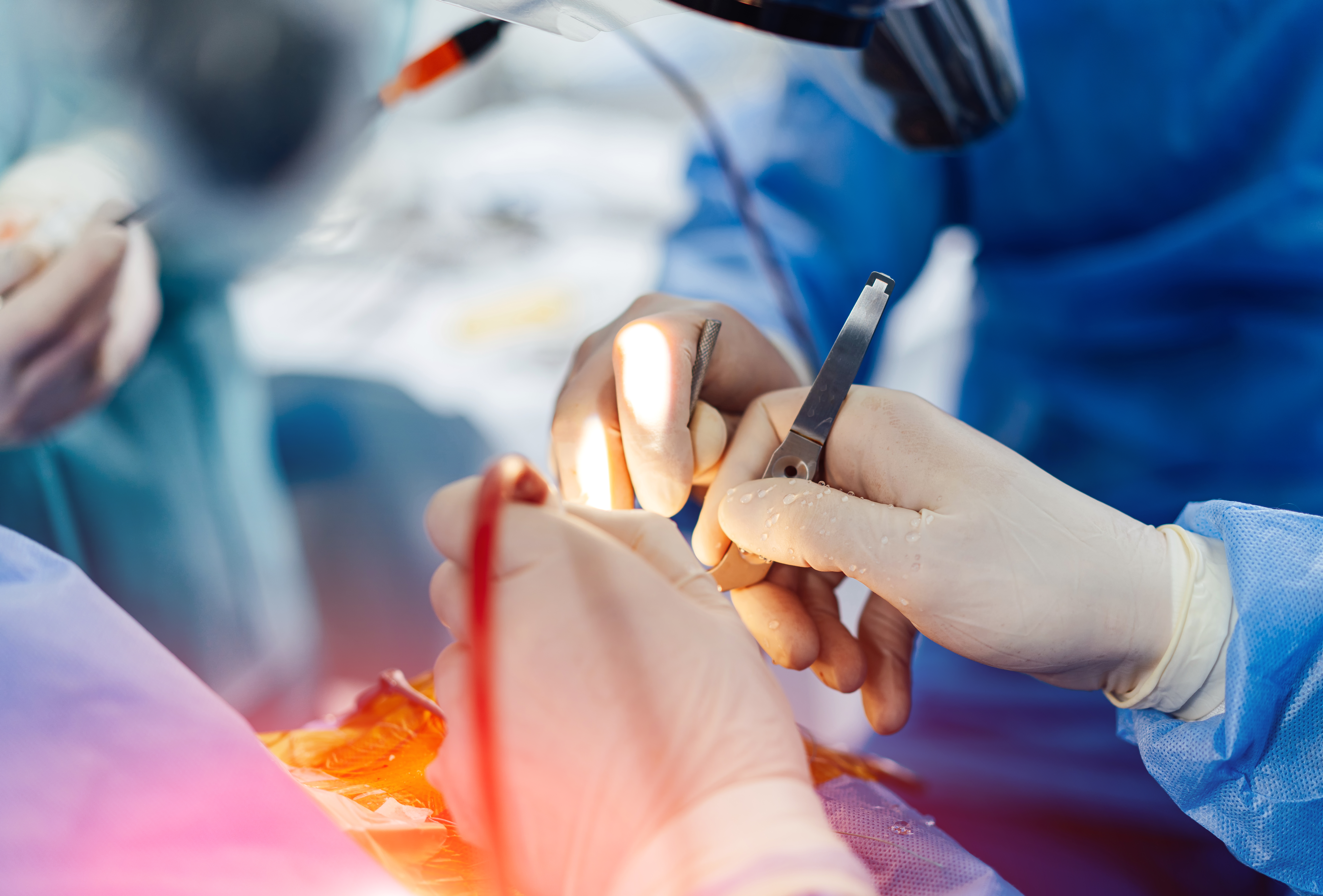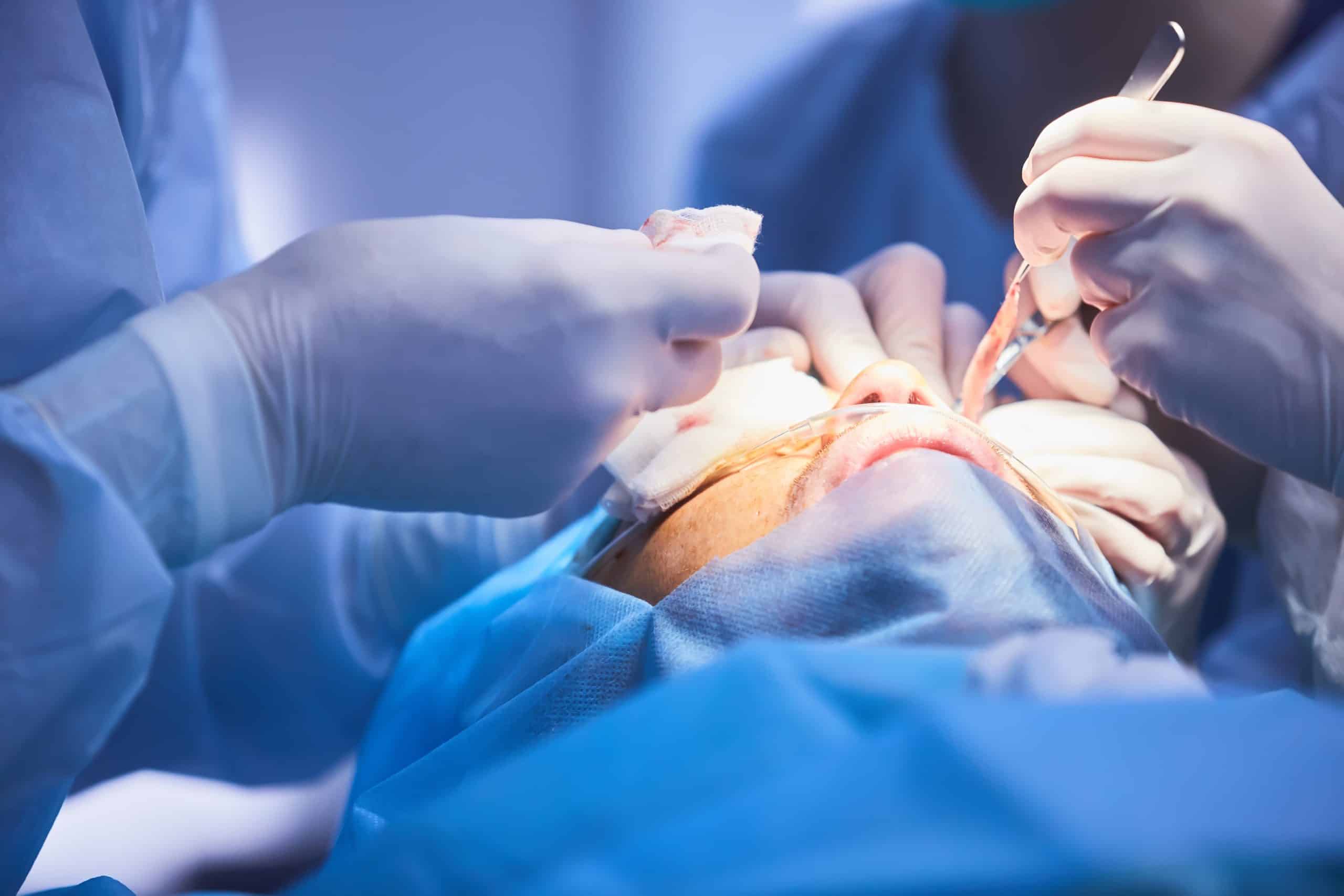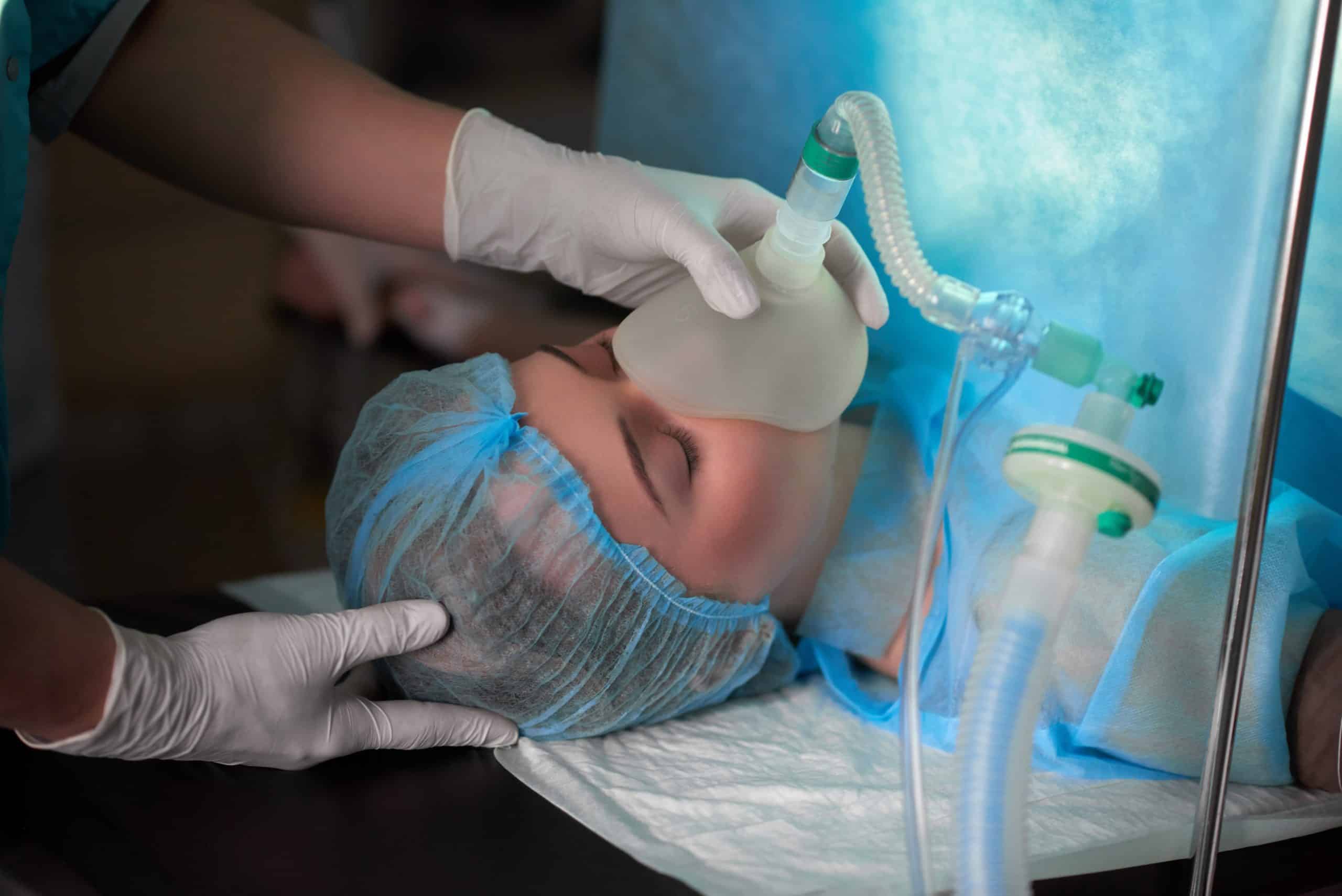Are you suffering from TMJ disorder and finding it difficult to eat, speak, or even open your mouth without pain? If so, TMJ replacement surgery may be the solution you’ve been searching for. In this ultimate guide, we’ll delve into the details of this life-changing procedure, discussing how it can restore function and eliminate the debilitating pain associated with TMJ disorder.
TMJ replacement surgery involves replacing the temporomandibular joint, the hinge connecting your jawbone to your skull, with an artificial joint. This innovative procedure can alleviate the symptoms of TMJ disorder by providing a stable joint structure and promoting proper jaw movement.
Throughout this comprehensive guide, we’ll explore the benefits and risks of TMJ replacement surgery, provide insights into the recovery process, and offer tips for finding the right surgeon for your individual needs. Whether you’ve tried various treatments without success or are just beginning to explore your options, this guide will equip you with the information you need to make an informed decision about TMJ replacement surgery.
Take the first step towards a pain-free life. Read on to discover everything you need to know about TMJ replacement surgery.
Understanding TMJ and its impact on daily life
TMJ disorder, also known as temporomandibular joint disorder, is a condition that affects the jaw joint and surrounding muscles. This complex joint allows us to perform essential tasks such as chewing, speaking, and yawning. When the TMJ is not functioning properly, it can lead to a range of symptoms, including pain, stiffness, clicking or popping sounds, and limited jaw movement.
Living with TMJ disorder can have a significant impact on your daily life. Simple activities such as eating or talking can become incredibly painful and challenging. The constant discomfort can lead to frustration, anxiety, and even depression. Additionally, the limitations imposed by TMJ disorder can affect your social life, career, and overall well-being.
If you are experiencing any of these symptoms or have been diagnosed with TMJ disorder, it’s crucial to understand your treatment options. TMJ replacement surgery is a potential solution that can restore function and alleviate the pain associated with this debilitating condition. Let’s explore when TMJ replacement surgery becomes necessary.
When is TMJ replacement surgery necessary?
TMJ replacement surgery is typically considered when other conservative treatments have failed to provide relief. Your dentist or oral surgeon will evaluate the severity of your TMJ disorder and recommend surgery if it is deemed necessary for your specific case.
Here are some common situations where TMJ replacement surgery may be necessary:
1. Severe pain and dysfunction: If you are experiencing severe pain, limited jaw movement, or significant difficulty performing daily activities, surgery may be the best option to restore function and alleviate your symptoms.
2. Degenerative joint disease: TMJ disorders can sometimes lead to degenerative changes in the joint, causing irreversible damage. In such cases, surgery may be necessary to replace the damaged joint and prevent further deterioration.
3. Traumatic injury: Trauma to the jaw joint can result in complex fractures or dislocations that may require surgical intervention. TMJ replacement surgery can help restore proper alignment and function after a traumatic injury.
4. Failed previous treatments: If you have already tried other treatments such as medications, physical therapy, or splints without success, your healthcare provider may recommend TMJ replacement surgery as a last resort.
It’s important to consult with a qualified oral surgeon who specializes in TMJ disorders to determine whether you are a suitable candidate for TMJ replacement surgery. Now that we understand when this procedure becomes necessary, let’s explore the TMJ replacement surgery procedure itself.
The TMJ replacement surgery procedure
TMJ replacement surgery is a complex procedure that requires a skilled oral surgeon with extensive experience in performing such surgeries. The surgery involves replacing the damaged or dysfunctional temporomandibular joint with an artificial joint, typically made of high-quality materials such as titanium or cobalt-chromium alloys.
Here’s a step-by-step overview of the TMJ replacement surgery procedure:
1. Preoperative evaluation: Before undergoing surgery, you will undergo a comprehensive evaluation to assess your overall health and determine the best surgical approach for your specific case. This evaluation may include imaging tests, such as X-rays or CT scans, to provide a detailed view of the joint.
2. Anesthesia: TMJ replacement surgery is typically performed under general anesthesia, ensuring that you are asleep and pain-free throughout the procedure.
3. Incision: The surgeon will make an incision in the skin over the TMJ area to gain access to the joint.
4. Joint removal: The damaged or dysfunctional joint components, including the condyle and disc, will be carefully removed.
5. Implant placement: The artificial joint components will be meticulously positioned and secured in place, allowing for smooth and stable jaw movement.
6. Closure: Once the replacement joint is in position, the surgeon will close the incisions using sutures or surgical staples.
7. Recovery and monitoring: After the surgery, you will be closely monitored in a recovery area to ensure your safety and comfort. Pain management strategies will be implemented to minimize postoperative discomfort.
The duration of the surgery may vary depending on the complexity of your case. It’s essential to follow your surgeon’s postoperative instructions carefully to facilitate a smooth recovery. In the next section, we will explore the risks and complications associated with TMJ replacement surgery.

Risks and complications associated with TMJ replacement surgery
As with any surgical procedure, TMJ replacement surgery carries certain risks and potential complications. It’s crucial to discuss these risks with your surgeon before making a decision. While complications are relatively rare, being aware of them can help you make an informed choice about your treatment.
Here are some potential risks and complications associated with TMJ replacement surgery:
1. Infection: Any surgical procedure carries a risk of infection. Your surgeon will prescribe antibiotics to reduce the risk, and it’s essential to follow their instructions regarding postoperative care and hygiene.
2. Bleeding: Some bleeding is normal after surgery, but excessive bleeding can occur in rare cases. Your surgeon will take steps to minimize bleeding during the procedure and monitor you for any signs of abnormal bleeding afterward.
3. Nerve injury: The proximity of the TMJ to important nerves in the face and jaw region means there is a small risk of nerve injury during surgery. Your surgeon will employ techniques to minimize this risk, but temporary or permanent nerve damage is a possibility.
4. Implant failure or complications: While TMJ replacement implants are designed to be durable and long-lasting, there is a small risk of implant failure or complications such as component loosening, fracture, or wear. Regular follow-up appointments with your surgeon are crucial to monitor the functioning of the replacement joint.
5. Scarring and cosmetic concerns: The surgical incision may leave a visible scar, and in some cases, there may be cosmetic concerns related to changes in facial appearance. Your surgeon will discuss these potential outcomes with you during the preoperative consultation.
It’s important to have realistic expectations and understand that while TMJ replacement surgery can significantly improve your quality of life, it may not eliminate all symptoms or completely restore jaw function. Now that we’ve explored the risks and complications, let’s move on to the recovery and rehabilitation process after TMJ replacement surgery.
Recovery and rehabilitation after TMJ replacement surgery
The recovery and rehabilitation process after TMJ replacement surgery is a crucial phase in your journey towards restored function and pain relief. The duration and specifics of your recovery will depend on various factors, including the complexity of the surgery and your overall health.
Here are some general guidelines to keep in mind during the recovery period:
1. Hospital stay: You will likely spend a night or two in the hospital for close monitoring and initial pain management. The medical staff will ensure you are comfortable and provide necessary medications and instructions.
2. Pain management: Your surgeon will prescribe pain medications to help manage any discomfort during the initial days or weeks post-surgery. It’s important to follow the prescribed dosage and schedule and communicate any concerns or side effects to your healthcare provider.
3. Soft diet: Your diet will be limited to soft foods for a period specified by your surgeon. This is to allow your jaw to heal properly and minimize stress on the replacement joint. Gradually, you will be able to reintroduce solid foods as advised by your healthcare team.
4. Physical therapy and jaw exercises: Physical therapy may be recommended to help restore muscle strength and joint mobility. Your healthcare provider will guide you through specific exercises to perform at home to aid in your recovery.
5. Follow-up appointments: Regular follow-up appointments with your surgeon are essential to monitor your progress, assess the functioning of the replacement joint, and address any concerns or complications that may arise.
It’s important to be patient during the recovery process and allow your body sufficient time to heal. Each individual’s recovery timeline may vary, but with proper care and adherence to your surgeon’s instructions, you can expect to regain function and experience a significant reduction in TMJ-related pain. In the next section, we will explore the success rates and long-term outcomes of TMJ replacement surgery.
Success rates and long-term outcomes of TMJ replacement surgery
TMJ replacement surgery has shown promising success rates in restoring function and reducing pain for individuals with severe TMJ disorders. Studies have demonstrated high patient satisfaction rates and significant improvements in quality of life following this procedure.
While success rates can vary depending on various factors, including the underlying cause of the TMJ disorder and the skill and experience of the surgeon, research indicates that the majority of individuals experience improved jaw function and a significant reduction in pain after TMJ replacement surgery.
Long-term outcomes of TMJ replacement surgery are generally favorable, with many individuals enjoying long-lasting pain relief and improved oral function. However, it’s important to note that regular follow-up appointments with your surgeon are crucial to monitor the health and functioning of the replacement joint and address any potential complications.
As with any surgical procedure, individual results may vary, and it’s important to have realistic expectations. Now that we’ve explored the success rates and long-term outcomes, let’s discuss alternative treatments for TMJ disorders.

Alternative treatments for TMJ disorders
While TMJ replacement surgery is an effective treatment option for severe TMJ disorders, it is not the only approach available. Depending on the severity and underlying cause of your TMJ disorder, your healthcare provider may recommend alternative treatments before considering surgery. Here are some common non-surgical treatment options for TMJ disorders:
1. Medications: Over-the-counter pain relievers, such as nonsteroidal anti-inflammatory drugs (NSAIDs), can help alleviate mild to moderate TMJ pain. In some cases, muscle relaxants or prescription pain medications may be prescribed.
2. Oral splints or mouthguards: These custom-made devices can help alleviate symptoms by reducing jaw clenching or teeth grinding, promoting proper alignment, and relieving pressure on the TMJ.
3. Physical therapy: Exercises and techniques performed under the guidance of a physical therapist can help improve jaw mobility, strengthen the muscles surrounding the TMJ, and reduce pain.
4. Lifestyle modifications: Simple changes such as avoiding chewy or hard foods, practicing stress reduction techniques, and applying heat or cold packs to the affected area can provide relief for some individuals.
5. Injections: In certain cases, injections of corticosteroids or botulinum toxin (Botox) may be recommended to alleviate pain and reduce muscle tension in the jaw.
It’s important to work closely with your healthcare provider to determine the most appropriate treatment plan for your specific case. They will consider factors such as the severity of your symptoms, your medical history, and your individual preferences when recommending a course of action. In the next section, we will discuss how to find the right surgeon for TMJ replacement surgery.
Finding the right surgeon for TMJ replacement surgery
Selecting the right surgeon for your TMJ replacement surgery is a critical step towards a successful outcome. Here are some factors to consider when searching for a qualified and experienced surgeon:
1. Board certification and credentials: Look for a surgeon who is board-certified in oral and maxillofacial surgery and has extensive experience in treating TMJ disorders. Consider checking their credentials, certifications, and affiliations with professional organizations.
2. Expertise and experience: Find a surgeon who specializes in TMJ replacement surgery and has performed a significant number of these procedures. Ask about their success rates and patient satisfaction levels.
3. Referrals and recommendations: Seek recommendations from your primary care physician, dentist, or other healthcare professionals. Additionally, consider reaching out to individuals who have undergone TMJ replacement surgery and ask about their experiences and recommendations.
4. Consultation and communication: Schedule consultations with potential surgeons to discuss your condition, treatment options, and their approach to TMJ replacement surgery. Pay attention to their communication style, willingness to answer your questions, and their ability to address your concerns.
5. Facility and support staff: Evaluate the surgical facility where the procedure will be performed. Ensure it is adequately equipped and staffed with experienced professionals who can provide comprehensive care throughout your surgical journey.
6. Patient testimonials and reviews: Read patient testimonials and online reviews to gain insights into the experiences of previous patients. While individual experiences may vary, these can provide valuable information about the surgeon’s reputation and the quality of care they provide.
Remember, the relationship between you and your surgeon is a partnership, and you should feel comfortable and confident in their abilities. Take your time to research and choose a surgeon who aligns with your needs and preferences. In the next section, we will discuss cost considerations and insurance coverage for TMJ replacement surgery.

Cost considerations and insurance coverage for TMJ replacement surgery
TMJ replacement surgery is a specialized procedure that can involve significant costs. The factors influencing the overall cost of the surgery can include the surgeon’s fees, facility fees, anesthesia fees, preoperative evaluations, imaging tests, postoperative care, and any additional medications or therapies prescribed.
Insurance coverage for TMJ replacement surgery can vary depending on your specific insurance plan and policy. Some insurance providers may cover a portion of the costs if the surgery is deemed medically necessary. It’s crucial to contact your insurance provider and discuss the details of your coverage, including any preauthorization requirements, deductibles, co-pays, or out-of-pocket expenses.
If your insurance does not cover TMJ replacement surgery or if you do not have insurance coverage, there may be other options available to help manage the cost. Some surgeons offer financing options
Living with a new TMJ: Tips for maintaining oral health and function after surgery
After undergoing TMJ replacement surgery, it’s important to take steps to maintain your oral health and ensure the longevity of the artificial joint. This section will provide practical tips and recommendations for post-surgery care.
1. Follow a proper oral hygiene routine
Maintaining good oral hygiene is crucial for preventing infections and complications. This section will outline the importance of brushing, flossing, and regular dental check-ups, as well as provide tips for caring for your new TMJ.
2. Adopting healthy eating habits
Following a soft food diet and avoiding hard, chewy, or sticky foods can help protect your new TMJ and promote optimal healing. This section will offer dietary recommendations and meal ideas for a smooth transition after surgery.
3. Managing stress and practicing relaxation techniques
Stress can exacerbate TMJ disorder symptoms. This section will explore stress management techniques and relaxation exercises to help reduce tension and promote overall well-being.






